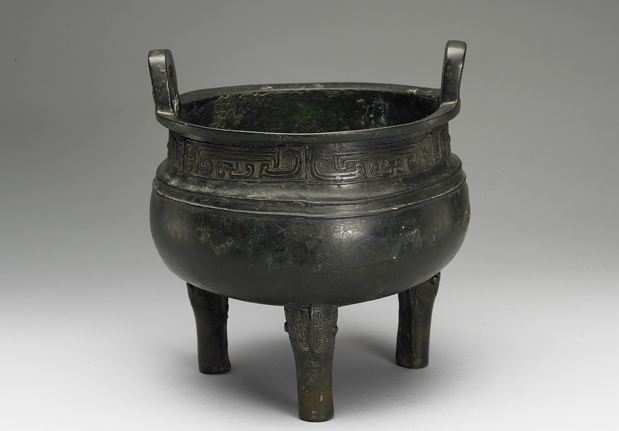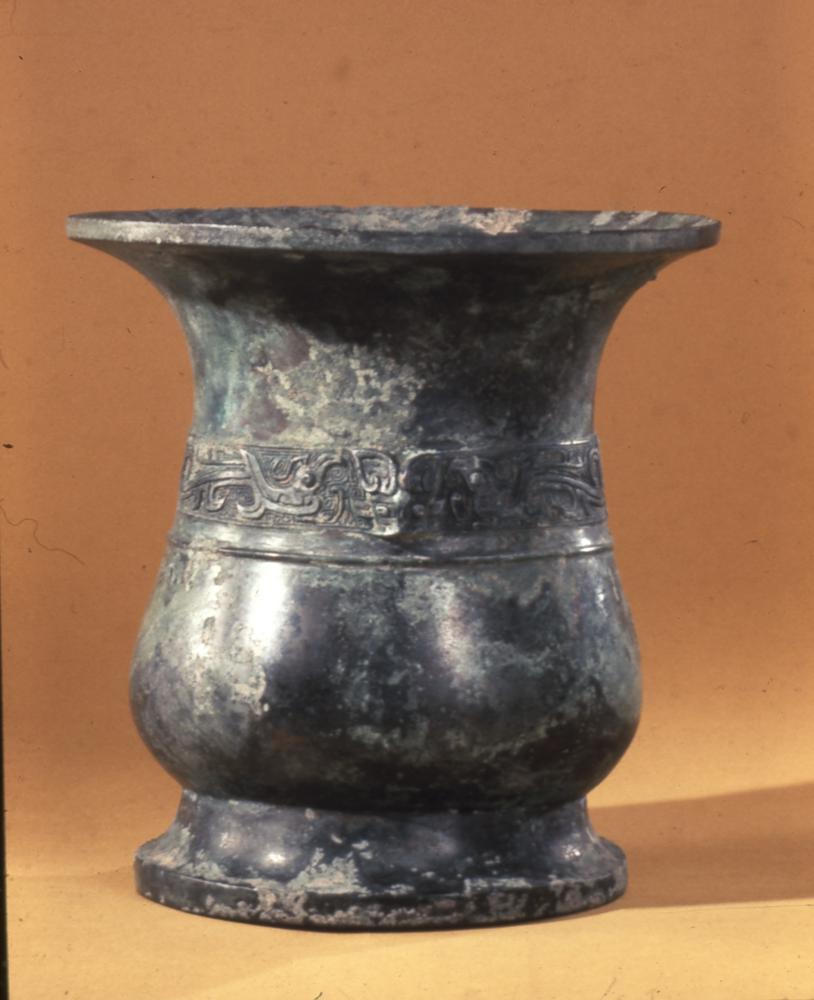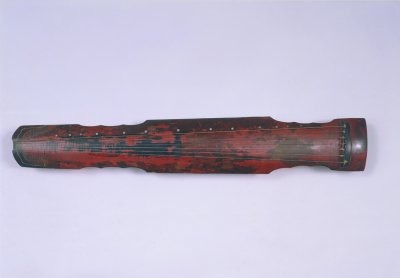Period:Warring States period Production date:5thC BC – 2ndC BC
Materials:jade
Technique:carved, incised,
Dimensions:Diameter: 18.50 centimetres
Description:
Fine and large jade ring disc (bi) with raised edge on both sides around the central aperture and around the rim, the surface carved with sprouting grain pattern (gu wen). Each of the small protuberances are incised with a spiral line on a ground showing traces of the original cutting in three directions with series of parallel lines. The grains occasionally replaced by spirals incised into the ground near the edges of the disc. The translucent stone of greenish grey colour with buff flecking and a more prominent brown marking to one side. One surface with rust staining from an iron object buried with the disc.
IMG
![图片[1]-bi BM-2022-3034.158-China Archive](https://chinaarchive.net/Warring States period/Jades/26_1.jpg)
Comments:Eastern Zhou, 4thC BC. Grey white jade with some areas stained by iron. This relatively large disc has two narrow flanges, one around the outer edge and the other at the central hole. The surfaces are crossed by rows of small spirals in relief, enlivened by incised lines. Discs and rings made in the first half off the Eastern Zhou, if decorated, carried tiger or dragon head motifs. Patterns of scrolls and spirals appeared from the 6th century BC, gradually being organised as here into regular lines. The present disc belongs to the stage when that organisation was complete but the surfaces were pleasingly uneven. Variations in both the surface and the spirals reflect the light unevenly and create a shimmering effect. Other examples with a similarly irregular surface have come from a Chu tomb at Henan Huaiyang Pingliangtai, from tombs in western China and from the tombs of the Zhongshan state at Pingshan xian in Hebei province. See Rawson 1995, p.252, cat.no.15:1. 7-3/8 ins. diameter, aperture 1-7/8 ins. diameter, 1/4 ins. thick.
Materials:jade
Technique:carved, incised,
Dimensions:Diameter: 18.50 centimetres
Description:
Fine and large jade ring disc (bi) with raised edge on both sides around the central aperture and around the rim, the surface carved with sprouting grain pattern (gu wen). Each of the small protuberances are incised with a spiral line on a ground showing traces of the original cutting in three directions with series of parallel lines. The grains occasionally replaced by spirals incised into the ground near the edges of the disc. The translucent stone of greenish grey colour with buff flecking and a more prominent brown marking to one side. One surface with rust staining from an iron object buried with the disc.
IMG
![图片[1]-bi BM-2022-3034.158-China Archive](https://chinaarchive.net/Warring States period/Jades/26_1.jpg)
Comments:Eastern Zhou, 4thC BC. Grey white jade with some areas stained by iron. This relatively large disc has two narrow flanges, one around the outer edge and the other at the central hole. The surfaces are crossed by rows of small spirals in relief, enlivened by incised lines. Discs and rings made in the first half off the Eastern Zhou, if decorated, carried tiger or dragon head motifs. Patterns of scrolls and spirals appeared from the 6th century BC, gradually being organised as here into regular lines. The present disc belongs to the stage when that organisation was complete but the surfaces were pleasingly uneven. Variations in both the surface and the spirals reflect the light unevenly and create a shimmering effect. Other examples with a similarly irregular surface have come from a Chu tomb at Henan Huaiyang Pingliangtai, from tombs in western China and from the tombs of the Zhongshan state at Pingshan xian in Hebei province. See Rawson 1995, p.252, cat.no.15:1. 7-3/8 ins. diameter, aperture 1-7/8 ins. diameter, 1/4 ins. thick.
© Copyright
The copyright of the article belongs to the author, please keep the original link for reprinting.
THE END





